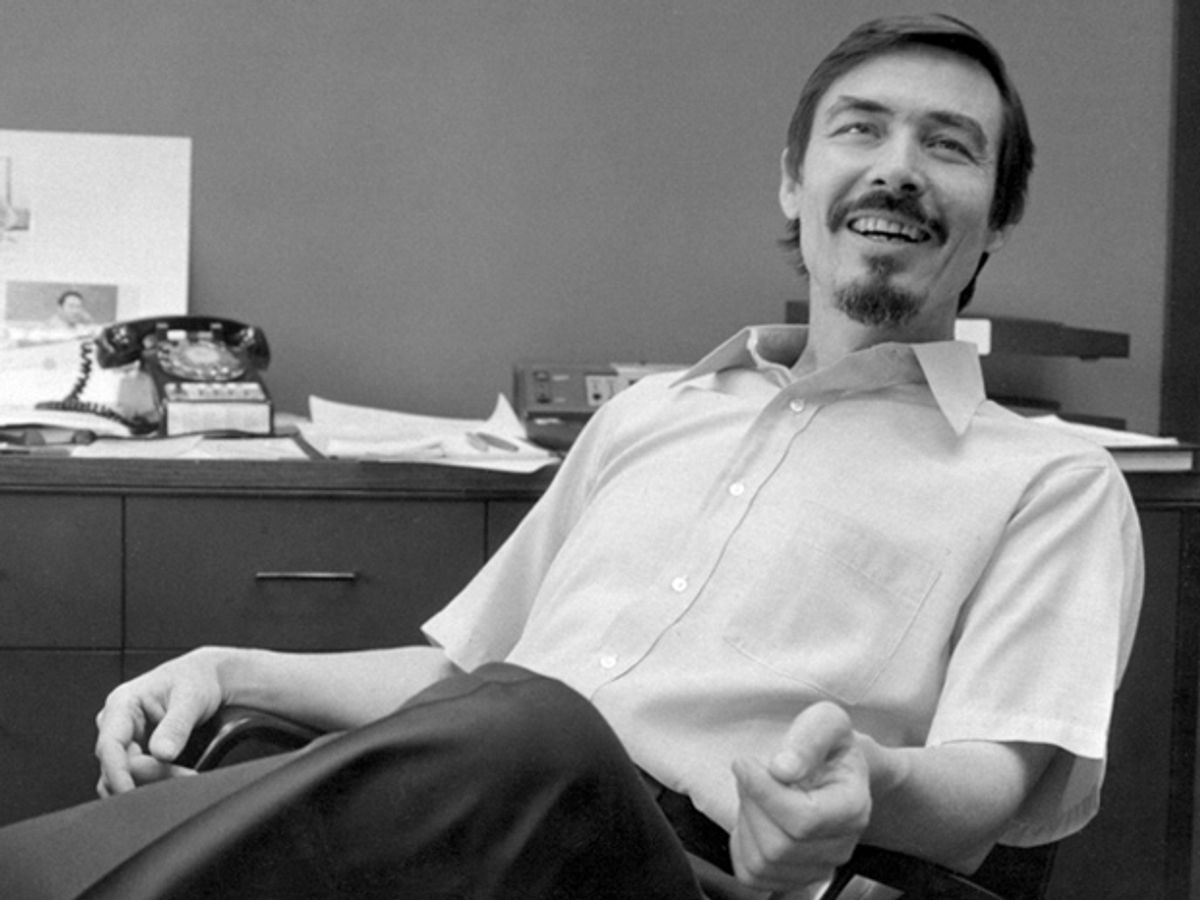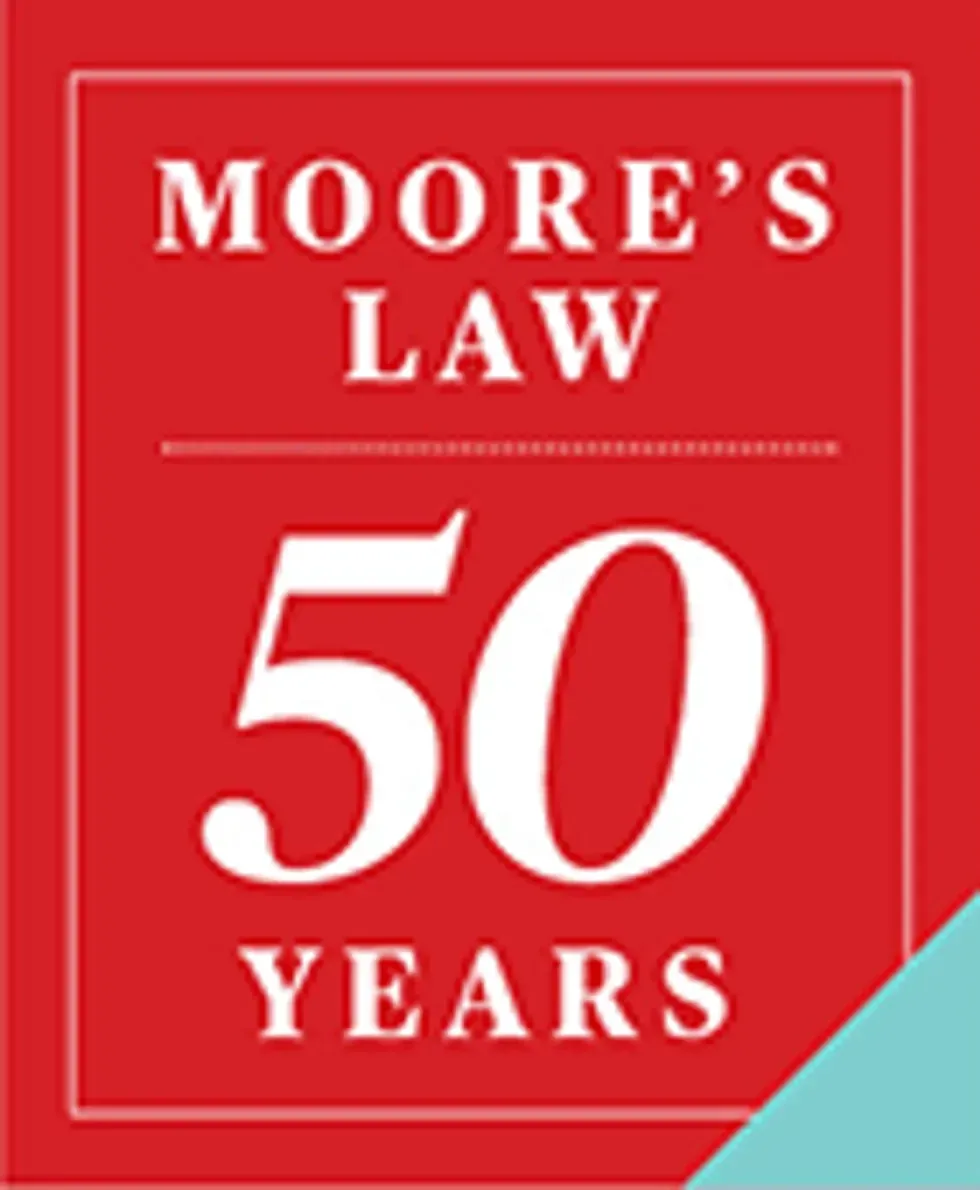Caltech professor Carver Mead performed some of the earliest work aimed at determining just how small transistors could ultimately get. A colleague of Gordon Moore, he’s widely credited with popularizing the phrase “Moore’s Law.” The two met around 1960. In anticipation of the 50th anniversary of Moore’s Law, he spoke with IEEE Spectrum Associate Editor Rachel Courtland about the anniversary, his work with Moore, and what the future holds.
Rachel Courtland: Do you remember the first time you met Gordon Moore?
Carver Mead: Yes I do, and it’s a great story. I was a brand new assistant professor at Caltech, just in my first year, and I was in my office working away on the results of some experiment I had done. This guy waltzed into my office and said, “Hi, I’m Gordon Moore from Fairchild.” [Laughs] Well, I had never heard of Gordon Moore, but I knew about Fairchild.
We shook hands, and he said he was on campus to recruit some engineers, and would I like some transistors to teach my lab course? And I said, “Oh, that would be absolutely great.” So he reached into the top of his briefcase, [and] the first thing he did was pull out a sock or a dirty shirt or something…. I was looking at him a little surprised. He turned around with this little grin on his face and said, “I travel light.”
Then he reached in [his briefcase] and pulled out one of those big manila envelopes that you put 8½-by-11 sheets in, and it was bulging. And he said, “Here. These are 2N697s.” Well, a 2N697. I knew what it was. It was not a particularly great thing, but it was nice. Then he reached in and pulled out another manila envelope that was bulging just as much, and he said, “And these are 2N706s.” And the 2N706 was a neat little transistor. It was used for logic and so forth, and [it was] really great.
I had never seen so many transistors. I was completely blown away. In those days, none of us had much budget for things like that for teaching. We were working with really cheap transistors that were about a dollar apiece in the stockroom. For a student to shell out that for [a device] that might burn out on the first experiment was not easy. Having some transistors that the students could work with without having to break their budget was a great thing.
We chatted for a while, and I told him what I was doing, and he said, “Why don’t you come up to Fairchild and give a seminar on that?” At the end of the [seminar], Gordon asked me if I’d like to consult with them. So I started my weekly consulting trip.
I would see Gordon every week. He’s an early riser and so am I, so I would get up early and go in around 7. Gordon would be there, so we would have our chat before anyone else showed up.
R.C.: I’d imagine that Moore’s 1965 paper, the one that kicked off the idea that became Moore’s Law, didn’t come out of a vacuum.
C.M.: Oh no, not at all. He gave me copies of his plot [showing the number of components increasing with time] long before it appeared in print. I was puzzling over them, and I was working on the physics of what was inside the transistor. I was also working on a thing called electron tunneling. It’s a quantum mechanical effect that allows electrons to go through thin insulating regions even though they’re not supposed to be able to do that.
I had been working on that, and one day Gordon, who had been thinking about how many transistors can go on a chip, said to me, “Oh, this electron tunneling you’re working on...doesn’t that limit how small a transistor you can make?” And I said, “It certainly will.” And he said, “Well, how small is that?”
We [Mead and then graduate student Bruce Hoeneisen] concluded that you could make—without doing anything but making the transistors smaller and lowering the voltages—transistors as small as 150 nanometers, which was about two orders of magnitude [smaller] than anybody had ever thought. [Work on the possibility of scaling transistors to much smaller sizes was first presented in 1968, Mead says, and a paper pinning down the numbers followed in 1972.] That was the beginning of people taking seriously the fact that the limit of how far you could go was a very long ways away.
R.C.: Moore’s Law isn’t really a law, at least not in the way we describe physical laws. How do you describe it to people?
C.M.: I always had to—especially in the early days—explain that this is not a law of physics. This is a law [of] the way that humans are. In order for anything to evolve like our semiconductor technology has evolved, it takes an enormous amount of creative effort by a large number of smart people. They have to believe that effort is going to result in a successful thing or they won’t put the effort in. That belief that it’s possible to do this thing is what causes the thing to happen.
The Moore’s Law thing is really about people’s belief in the future and their willingness to put energy into causing that thing to come about. It’s a marvelous statement about humanity.
R.C.: It seems like Moore’s Law is a mix of things. It wasn’t just about belief—physics also had to comply.
C.M.: That was, of course, [why it] was important to figure out in the physics where it was going to give out and why it was going to give out. What was really surprising, I think to all of us, was that we had so much running room with just silicon—that it didn’t take any materials or techniques that we weren’t using already. All we had to do was get better at making them smaller.
R.C.: Was there something special about silicon?
C.M.: Silicon has a particularly stable crystal structure. Actually more important for the early days, silicon has as its native oxide one of the most ideal insulators known. Silicon isn’t a particularly good semiconductor. There are better ones, like gallium arsenide. But it has this property of having its native oxide being a very, very stable insulator, which likewise doesn’t come apart when you put electric fields on it. That combination was really what made silicon the magic material. By now, we’re making electron devices out of all kinds of semiconducting materials. But in terms of the really complex ones that have to be really small and hang together, silicon’s still a really important, central part of our war chest.
R.C.: What happens when Moore’s Law comes to an end?
C.M.: The thing we don’t want to do is to have the 50th anniversary [of Moore's Law] surrounded with some sort of pessimism that it’s coming to an end. The fact that the blind scaling of transistors to smaller sizes is not going to last forever doesn’t mean that the phenomenon of building more complex and more functional electronic systems is coming to an end.
There are a huge number of very smart people who are pushing the limits all the time. There’s a movement [for example] to integrate optical and electronic components on the same chip. It’s called silicon photonics. And it’s just taking off.
My experience has been whenever you think you’re out of gas on a learning curve, there’s a breakthrough, but the breakthrough never comes from where you’re thinking. It’s never clear until it’s already happened what’s going to be the next really exciting thing. But there always is one.
This interview was edited for length and clarity.
Rachel Courtland, an unabashed astronomy aficionado, is a former senior associate editor at Spectrum. She now works in the editorial department at Nature. At Spectrum, she wrote about a variety of engineering efforts, including the quest for energy-producing fusion at the National Ignition Facility and the hunt for dark matter using an ultraquiet radio receiver. In 2014, she received a Neal Award for her feature on shrinking transistors and how the semiconductor industry talks about the challenge.




